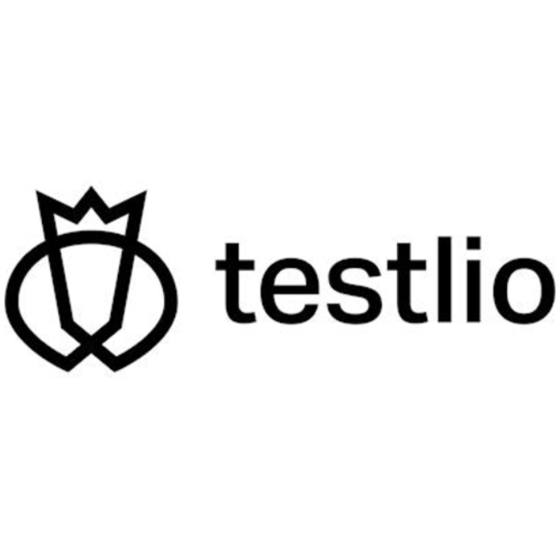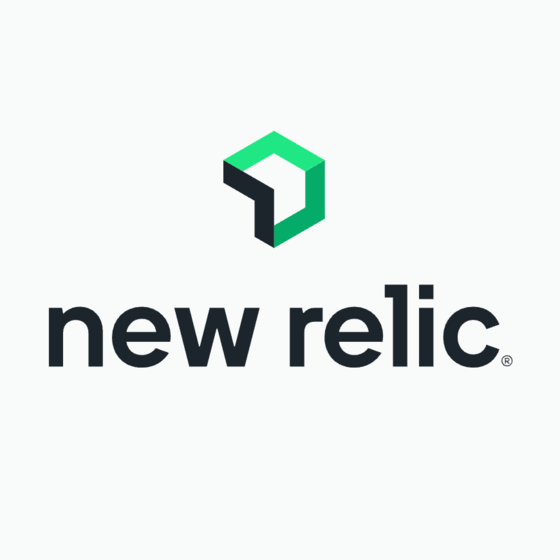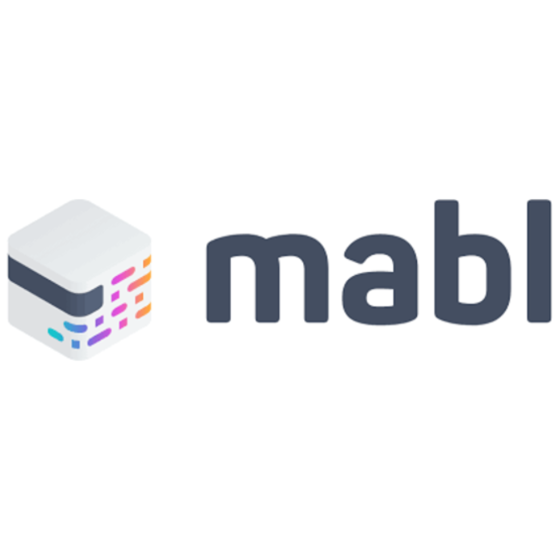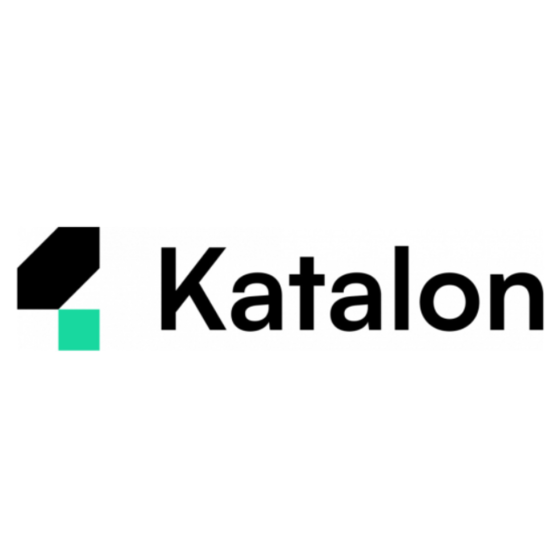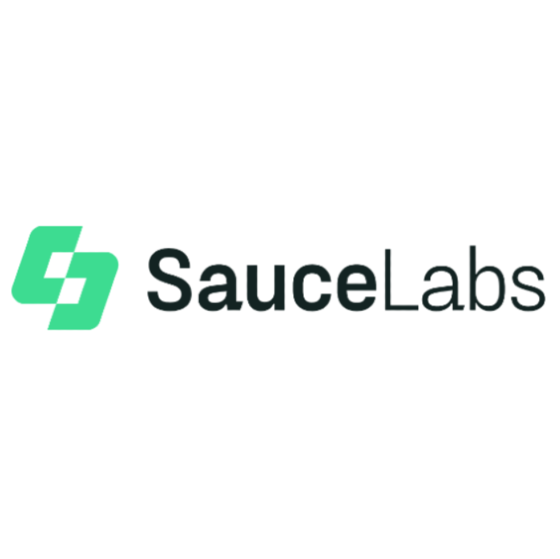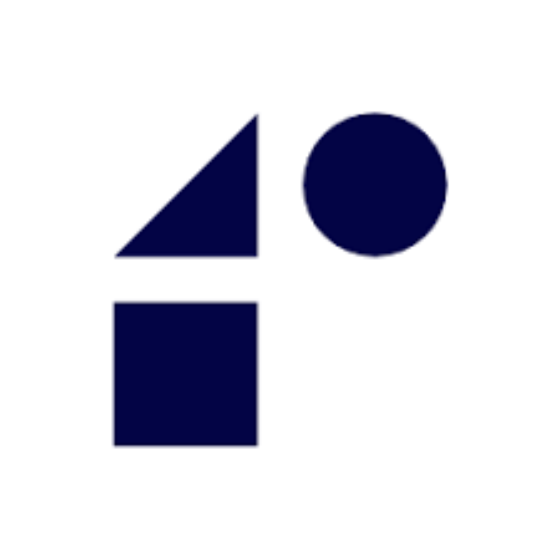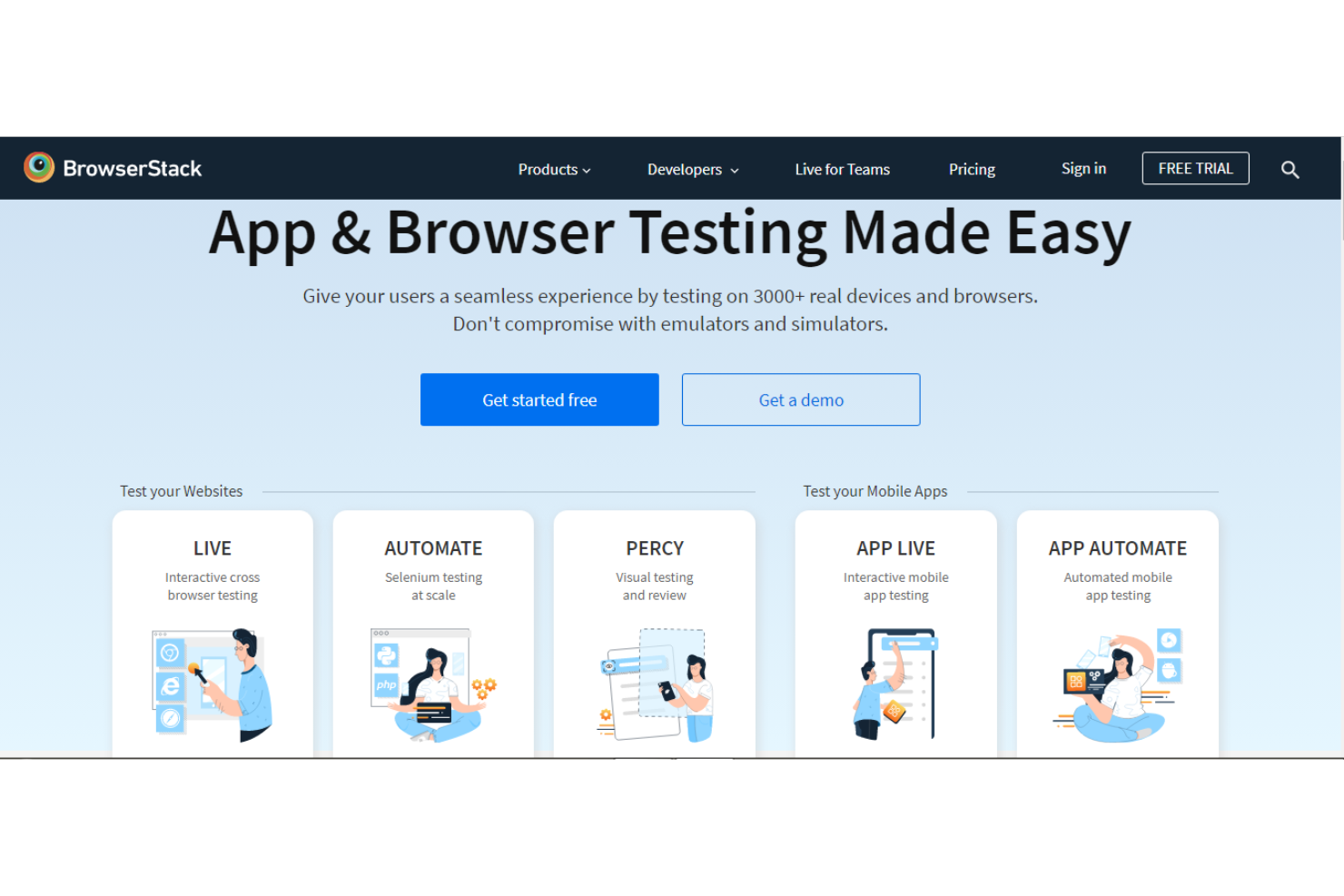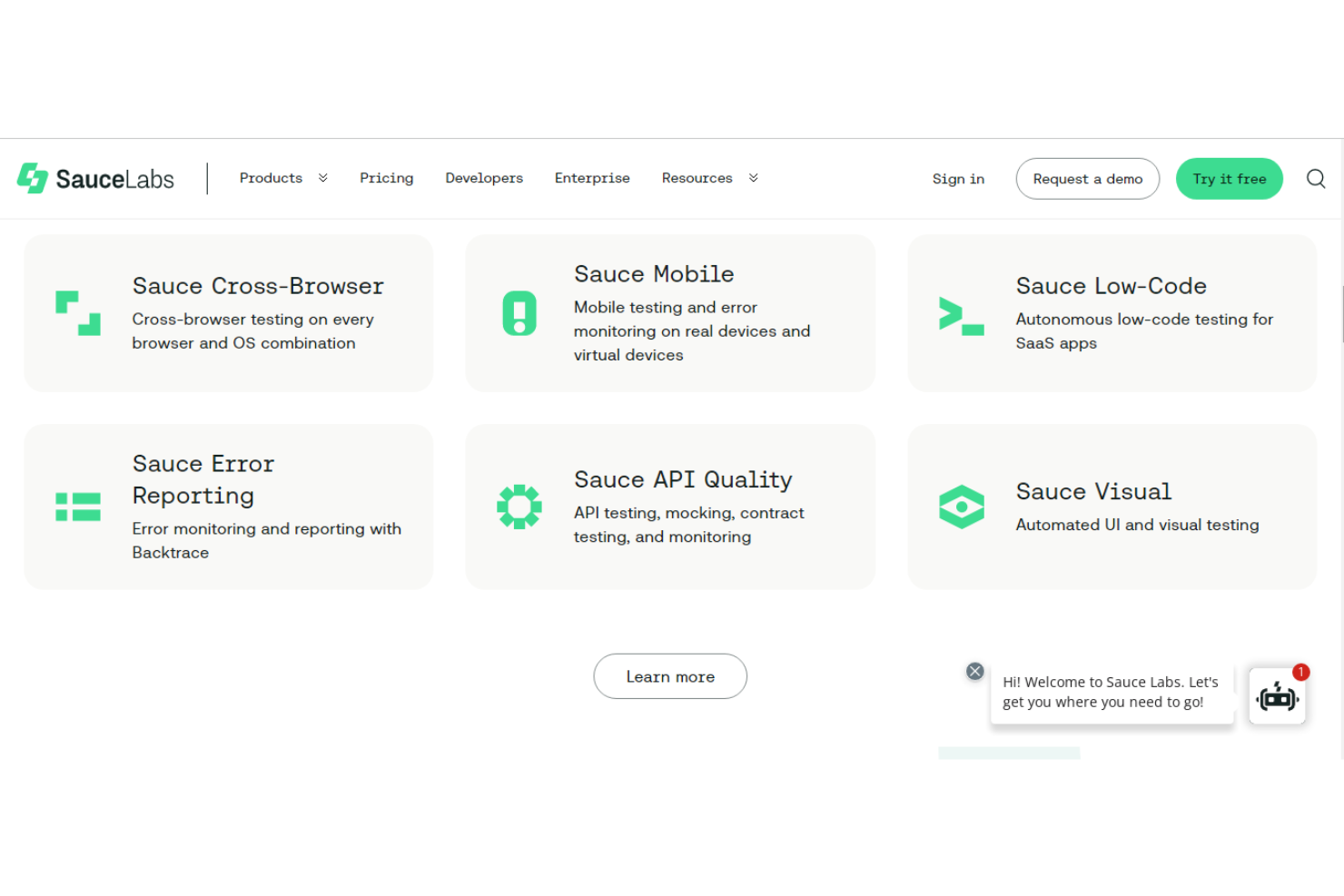Best SaaS Testing Tools Shortlist
Here’s my shortlist of the best SaaS testing tools:
Our one-on-one guidance will help you find the perfect fit.
Ensuring your software works flawlessly is a constant challenge. Bugs and errors can slow you down, frustrate your team, and impact your users' experience. That's where SaaS testing tools come in. They help you catch issues early, save time, and improve software quality.
I've spent years diving into the SaaS industry, evaluating tools that make a real difference. In this article, I'll share my top picks for the best SaaS testing tools on the market. You’ll find insights into their unique features and how they can benefit your team. My goal is to provide you with an unbiased review so you can make an informed decision.
Why Trust Our Software Reviews
We’ve been testing and reviewing SaaS development software since 2023. As tech experts ourselves, we know how critical and difficult it is to make the right decision when selecting software. We invest in deep research to help our audience make better software purchasing decisions.
We’ve tested more than 2,000 tools for different SaaS development use cases and written over 1,000 comprehensive software reviews. Learn how we stay transparent & check out our software review methodology.
Best SaaS Testing Tools Summary
This comparison chart summarizes pricing details for my top SaaS testing tools selections to help you find the best one for your budget and business needs.
| Tool | Best For | Trial Info | Price | ||
|---|---|---|---|---|---|
| 1 | Best for AI-powered test case creation | 14-day free trial | Pricing upon request | Website | |
| 2 | Best for cross-platform testing | Free plan available | From $25/month (billed annually) | Website | |
| 3 | Best for fast test creation | Free demo available | Pricing upon request | Website | |
| 4 | Best for real device testing | Free trial available | From $15/user/month (billed annually) | Website | |
| 5 | Best for large enterprise teams | Not available | Pricing upon request | Website | |
| 6 | Best for performance monitoring | Free plan + demo available | Pricing upon request | Website | |
| 7 | Best for automated regression testing | Free trial available + free demo | Pricing upon request | Website | |
| 8 | Best for beginners in test automation | Free plan available + free demo | From $183/user/month | Website | |
| 9 | Best for continuous testing | Free trial available + free demo | From $39/month (billed annually) | Website | |
| 10 | Best for browser testing without code | 14-day free trial | From $212/month | Website |
-

Docker
Visit WebsiteThis is an aggregated rating for this tool including ratings from Crozdesk users and ratings from other sites.4.6 -

Pulumi
Visit WebsiteThis is an aggregated rating for this tool including ratings from Crozdesk users and ratings from other sites.4.8 -

GitHub Actions
Visit Website
Best SaaS Testing Tool Reviews
Below are my detailed summaries of the best SaaS testing tools that made it onto my shortlist. My reviews offer a detailed look at the key features, pros & cons, integrations, and ideal use cases of each tool to help you find the best one for you.
Kualitee is a test management platform designed to help QA and development teams plan, execute, and monitor their testing efforts. It supports both manual and automated testing, offering flexibility to accommodate different testing methodologies.
Why I picked Kualitee: Kualitee stands out as a SaaS testing tool thanks to its AI-powered test case generation, which helps your team quickly create accurate test scenarios with minimal manual effort. It also includes built-in defect management, so you can track and resolve bugs without switching tools. Together, these features help keep your QA process efficient and focused.
Standout features & integrations:
Features include the ability to execute test cases directly from the Test Cases screen without creating a cycle, which can be particularly useful for quick validations or ad-hoc testing scenarios. Kualitee also offers customizable reporting, allowing you to create reports that fit your team's specific needs, save templates, and schedule reports for regular updates.
Integrations include Bitbucket, CircleCI, ClickUp, GitHub, GitLab, JIRA, Jenkins, Linear, Redmine, Selenium, Slack, and Trello.
Pros and cons
Pros:
- Offers requirement traceability to ensure alignment with project objectives
- Reusable test repositories facilitate efficient test management
- AI-powered test case generation
Cons:
- Customization options, while available, may require additional setup time
- Limited integration options with some development tools
TestGrid is a versatile testing platform designed for teams needing cross-platform testing capabilities. It serves developers and QA teams by facilitating testing on multiple devices and browsers. The platform supports both web and mobile app testing, ensuring comprehensive coverage.
Why I picked TestGrid: TestGrid excels with its cross-platform testing capabilities. It offers codeless automation, allowing you to create tests without scripting. You can test on real devices, which ensures accuracy in real-world scenarios. Its support for over 1000 browsers and operating systems helps your team cover a wide range of environments.
Standout features & integrations:
Features include codeless automation for easy test creation, mobile app testing on real devices, and cross-browser testing on over 1000 browsers. It also offers performance testing to ensure app reliability and API testing for comprehensive coverage.
Integrations include Jenkins, Jira, Slack, GitHub, Bitbucket, GitLab, Azure DevOps, Bamboo, CircleCI, and Travis CI.
Pros and cons
Pros:
- Extensive browser coverage
- Real device testing supported
- Codeless automation available
Cons:
- Occasional integration glitches
- Limited customer support hours
QA Wolf is a testing platform aimed at teams requiring quick and efficient test creation. It's designed for developers and QA professionals who need to automate testing without extensive coding. The platform focuses on speeding up the testing process and ensuring reliability.
Why I picked QA Wolf: QA Wolf offers rapid test creation with its easy-to-use interface. The platform provides a 100% parallel testing feature, allowing your team to run multiple tests simultaneously. Its video recording functionality captures each test run, making it easier to diagnose issues. With cloud-based testing, you can access tests from anywhere, supporting fast test creation and execution.
Standout features & integrations:
Features include video recording of test sessions for easy debugging, cloud-based access to run tests from anywhere, and a collaborative environment that allows your team to work together efficiently. It also provides CI/CD pipeline integration for continuous testing.
Integrations include GitHub, Slack, Jira, CircleCI, Bitbucket, GitLab, Travis CI, Azure DevOps, Jenkins, and AWS.
Pros and cons
Pros:
- Supports CI/CD integration
- Cloud-based access
- Fast test creation process
Cons:
- Some features need technical setup
- Limited offline features
BrowserStack is a cloud-based testing platform catering to developers and QA teams needing real device testing environments. It enables testing across a wide range of devices and browsers to ensure comprehensive software quality. The platform focuses on providing accurate results by testing on actual devices.
Why I picked BrowserStack: BrowserStack offers access to a vast array of real devices for testing, ensuring your team gets accurate results. It supports instant access to a variety of browser and OS combinations, helping you cover a broad testing spectrum. The platform's live testing feature allows you to interact with your application in real-time. With BrowserStack, you can ensure your application performs consistently across different environments.
Standout features & integrations:
Features include live testing, which lets you interact with your application in real-time. The platform offers automated testing to speed up the QA process. It also provides visual testing tools that help your team catch UI inconsistencies.
Integrations include Jenkins, GitHub, Jira, Slack, Trello, Azure DevOps, Travis CI, CircleCI, Bamboo, and Bitbucket.
Pros and cons
Pros:
- Wide range of real devices
- Instant access to browsers
- Supports real-time interaction
Cons:
- Some setup complexity
- Potential for slow performance
Testlio is a testing platform tailored for large enterprise teams needing extensive test coverage and collaboration. It serves QA teams and developers by providing managed testing services and flexible testing solutions. The platform focuses on delivering high-quality testing at scale.
Why I picked Testlio: Testlio excels in supporting large enterprise teams with its managed testing services. It provides a global network of expert testers, ensuring thorough test coverage across various devices and environments. The platform's flexible testing solutions allow your team to customize testing workflows to fit specific needs. With Testlio, your team benefits from comprehensive reporting, helping you make informed decisions based on test results.
Standout features & integrations:
Features include managed testing services that provide access to expert testers worldwide. The platform offers flexible testing solutions, allowing your team to customize workflows to fit their needs. It also provides detailed reporting features that help you analyze test results effectively.
Integrations include Jira, Slack, GitHub, Azure DevOps, Trello, Asana, Jenkins, TestRail, Bugzilla, and Monday.com.
Pros and cons
Pros:
- Detailed reporting features
- Flexible testing workflows
- Access to global testers
Cons:
- Complex setup process
- May require training
New Relic is a performance monitoring platform designed for developers and operations teams who need to track application performance and reliability. It provides real-time insights and analytics to help your team optimize application performance and user experience. The platform focuses on delivering detailed performance data to ensure applications run smoothly.
Why I picked New Relic: New Relic excels in performance monitoring with its real-time analytics and insights. It provides detailed metrics on application performance, helping your team identify and resolve issues quickly. The platform's customizable dashboards allow you to focus on the data that matters most to your team. With New Relic, you can track application performance across multiple environments seamlessly.
Standout features & integrations:
Features include real-time analytics that provides immediate insights into application performance. The platform offers customizable dashboards to help you tailor the data view to your specific needs. It also provides alerting features to notify your team of performance issues as they arise.
Integrations include AWS, Azure, Google Cloud, Slack, PagerDuty, Jira, Kubernetes, Jenkins, GitHub, and Datadog.
Pros and cons
Pros:
- Tracks across multiple environments
- Comprehensive alerting features
- Customizable dashboards
Cons:
- Some features require configuration
- May need consistent monitoring
Mabl is an automated testing platform designed for quality assurance teams and developers focused on regression testing. It helps ensure software quality by automating repetitive test cases and providing insights into testing outcomes. The platform offers tools to streamline testing processes and improve efficiency.
Why I picked Mabl: Mabl excels in automated regression testing with its integrated testing capabilities. It allows your team to create automated tests without heavy scripting, making it accessible for various skill levels. The platform's intelligent test execution adapts to changes in your application, maintaining test accuracy. With visual testing, Mabl helps catch UI issues that might otherwise go unnoticed.
Standout features & integrations:
Features include intelligent test execution, which adapts to changes in your application. The platform offers visual testing to catch UI issues effectively. It also provides a user-friendly interface that simplifies the test creation process.
Integrations include Jira, Slack, GitHub, Bitbucket, Jenkins, CircleCI, GitLab, Azure DevOps, Bamboo, and Travis CI.
Pros and cons
Pros:
- Visual testing capabilities
- User-friendly interface
- Intelligent test execution
Cons:
- Some features need configuration
- May need technical knowledge
Katalon Studio is a test automation tool designed for beginners and experienced testers alike, offering a user-friendly interface and robust capabilities. It caters to QA teams and developers by simplifying the creation and execution of automated tests. The platform enables users to perform testing across web, API, mobile, and desktop applications.
Why I picked Katalon Studio: Katalon Studio is ideal for beginners due to its intuitive interface and easy setup. It provides pre-built keywords, allowing your team to create automated tests without extensive coding knowledge. The platform offers a versatile scripting environment, accommodating both manual testers and seasoned developers. With Katalon Studio, your team can efficiently manage test projects from start to finish.
Standout features & integrations:
Features include pre-built keywords that simplify test creation. The platform offers a versatile scripting environment, enabling both manual and automated testing. It also provides robust reporting features that help your team analyze results effectively.
Integrations include Jira, Jenkins, Git, Slack, TestRail, qTest, Azure DevOps, Kobiton, Sauce Labs, and BrowserStack.
Pros and cons
Pros:
- Supports multiple testing types
- Intuitive interface for beginners
- Pre-built keywords available
Cons:
- Limited customization options
- Some advanced features locked
Sauce Labs is a cloud-based testing platform designed for developers and QA teams focused on continuous testing. It provides a reliable environment for testing applications across multiple browsers and devices. The platform aims to enhance test coverage and improve application quality.
Why I picked Sauce Labs: Sauce Labs is known for its continuous testing capabilities, making it ideal for teams practicing DevOps and agile methodologies. It offers a wide range of browser and device combinations, allowing your team to test in parallel and reduce testing time. The platform's automated testing features help streamline testing processes. With Sauce Labs, you can ensure your application performs well under various conditions.
Standout features & integrations:
Features include parallel testing, which allows your team to run multiple tests simultaneously. The platform provides cross-browser testing to ensure your application works on all major browsers. It also offers real device testing, providing accurate results for mobile applications.
Integrations include Jenkins, GitHub, Jira, Slack, Bamboo, CircleCI, Azure DevOps, Travis CI, Bitbucket, and TeamCity.
Pros and cons
Pros:
- Real device testing available
- Supports parallel testing
- Extensive browser and device coverage
Cons:
- Needs consistent monitoring
- Requires stable internet connection
Reflect is an AI-powered automated regression testing platform that enhances test coverage without impeding development. With Reflect, easily create comprehensive end-to-end tests without writing any code, utilizing your web browser as the interface, recording actions to generate repeatable tests, enabling frequent testing without installations.
Why I Picked Reflect: Users can leverage Reflect's advanced visual testing capabilities to uncover elusive bugs often missed by typical website automation tools. They offer first-class support for detecting and resolving visual regressions, including UI bugs that do not affect site functionality. You can set up and execute tests effortlessly with Reflect's built-in scheduler, or seamlessly integrate with your existing CI/CD solution through their comprehensive integration options. Additionally, Reflect provides cross-browser testing, ensuring compatibility across modern browsers like Chrome, Firefox, Edge, and Safari, with regular infrastructure updates to accommodate new browser versions.
Reflect Standout Features & Integrations
Features include regression testing, visual testing, automated testing, parallel testing, CI/CD integration, cross-browser testing, end-to-end testing, no-code/low-code, test scheduler, website testing, API testing, cloud recorder, video playback, email testing, SMS testing, and SAML/SSO.
Integrations include Azure DevOps, Bitbucket Pipeline, CircleCI, GitHub, Actions, Heroku, Gitlab CI/CD, Jenkins Pipeline, Coherence, Webapp.io, Travis CI, Jenkins-X, Codefresh, and AWS CodeDeploy.
Pros and cons
Pros:
- Built-in first-class support for visual testing
- Unlimited tests, unlimited users
- 30 min free test execution time
Cons:
- Extra cost for more than 30-day test data retention
- Some features are add-ons (email, SMS)
Other SaaS Testing Tools
Here are some additional SaaS testing tools options that didn’t make it onto my shortlist, but are still worth checking out:
- Autify
For AI-driven test maintenance
- Jira
For agile project management
- Ghost Inspector
For visual testing
- Appium
For mobile app testing
- Zephyr
For test management integration
- TestFairy
For mobile app testing insights
- Selenium
For open-source browser automation
- Rainforest
For no-code test automation
- Tricentis Test Automation
For enterprise automation
- TestRail
For test case tracking
- TestMonitor
For end-to-end testing
- BugBug
For lightweight web testing
- Owlity
For autonomous test generation
- Tricentis Tosca
Test automation, test management, and performance testing solutions for developers in various industries, including Utilities, government, telecom, healthcare, and financial services
- Tricentis Testim
Test automation solutions and Salesforce testing for engineers and agile teams
- Experitest
Continuous web and mobile testing capabilities for users in companies of all sizes
- BitBar
Browser testing and device testing solutions for QA professionals in companies of all sizes
- CrossBrowserTesting
Functional testing, test management, performance testing, and agile testing capabilities for QA teams in small and big enterprises
- Cypress
Browser testing and visual debugging capabilities for developers across all industries
- Perfecto
Continuous, automated, mobile app, and web testing solutions for QA teams in automotive, financial services, healthcare, retail, and telecom industries
SaaS Testing Tool Selection Criteria
When selecting the best SaaS testing tools to include in this list, I considered common buyer needs and pain points like ensuring cross-platform compatibility and reducing testing time. I also used the following framework to keep my evaluation structured and fair:
Core Functionality (25% of total score)
To be considered for inclusion in this list, each solution had to fulfill these common use cases:
- Test automation
- Cross-browser testing
- Mobile app testing
- Integration with CI/CD pipelines
- Reporting and analytics
Additional Standout Features (25% of total score)
To help further narrow down the competition, I also looked for unique features, such as:
- Codeless testing capabilities
- Real device testing
- AI-driven test insights
- Visual testing tools
- Support for multiple programming languages
Usability (10% of total score)
To get a sense of the usability of each system, I considered the following:
- Intuitive interface design
- Ease of navigation
- Customization options
- Learning curve for new users
- Availability of user guides
Onboarding (10% of total score)
To evaluate the onboarding experience for each platform, I considered the following:
- Availability of training videos
- Interactive product tours
- Access to templates
- Webinars and live demos
- Chatbot assistance
Customer Support (10% of total score)
To assess each software provider’s customer support services, I considered the following:
- 24/7 support availability
- Multiple support channels
- Response time to queries
- Availability of a knowledge base
- Personalized support options
Value For Money (10% of total score)
To evaluate the value for money of each platform, I considered the following:
- Pricing transparency
- Features included in base plans
- Flexibility in pricing tiers
- Cost compared to competitors
- Discounts for annual subscriptions
Customer Reviews (10% of total score)
To get a sense of overall customer satisfaction, I considered the following when reading customer reviews:
- Overall satisfaction ratings
- Feedback on performance
- Mention of specific features
- Comments on reliability
- User recommendations
How to Choose SaaS Testing Tool
It’s easy to get bogged down in long feature lists and complex pricing structures. To help you stay focused as you work through your unique software selection process, here’s a checklist of factors to keep in mind:
| Factor | What to Consider |
| Scalability | Ensure the tool can grow with your team. Look for solutions that support increasing test volumes and user numbers without a drop in performance. |
| Integrations | Check if the tool integrates with your existing software stack, including CI/CD pipelines, version control systems, and communication tools like Slack. |
| Customizability | Find tools that allow you to tailor the testing environment and workflows to fit your specific project needs, enhancing efficiency and adaptation. |
| Ease of Use | Look for intuitive interfaces and straightforward navigation. Tools should be easy for your team to learn and use, minimizing the need for extensive training. |
| Budget | Evaluate the total cost, including hidden fees. Ensure the tool fits your budget while offering the necessary features for your testing requirements. |
| Security Safeguards | Ensure the tool has robust security measures to protect your data, including encryption and compliance with industry standards like GDPR or HIPAA. |
| Support | Consider the availability and quality of customer support. Look for 24/7 support, multiple channels, and quick response times to resolve issues efficiently. |
| Performance | Assess the tool's speed and reliability. It should handle large-scale tests without lag, ensuring accurate and timely results for your team. |
Trends in SaaS Testing Tool
In my research, I sourced countless product updates, press releases, and release logs from different SaaS testing tools vendors and website testing tools. Here are some of the emerging trends I’m keeping an eye on:
- AI-Powered Testing: AI is being used to enhance test accuracy and efficiency. It helps in identifying patterns and predicting failures. Vendors like Mabl use AI to adapt tests automatically, making testing smarter and less time-consuming for teams.
- Shift-Left Testing: Testing is moving earlier in the development cycle, allowing teams to catch bugs sooner. This trend helps reduce costs and improve product quality. Tools are now providing features that integrate testing directly in the development phase.
- Performance Testing as a Service: More vendors are offering performance testing in the cloud, providing scalable resources without the need for on-premise hardware. This trend allows teams to simulate real-world loads and get reliable performance insights.
- Visual Regression Testing: This trend focuses on detecting visual changes in the UI. It's becoming crucial as user interfaces become more dynamic. Tools like Ghost Inspector are incorporating visual testing to ensure UI consistency.
- Crowdsourced Testing: Leveraging a global pool of testers, this trend allows for diverse testing scenarios. It provides real-world user feedback and is becoming essential for global applications. Some vendors are integrating crowdsourced testing into their platforms for broader test coverage.
What Are SaaS Testing Tools?
SaaS testing tools are cloud-based solutions that help teams test software applications for bugs and performance issues. These tools are commonly used by developers, QA testers, and IT professionals to ensure software quality and reliability. Automated testing, performance monitoring, and cross-browser testing features help with early bug detection, efficient test execution, and maintaining UI consistency. Overall, these tools offer businesses a way to enhance software quality while reducing time to market.
Features of SaaS Testing Tools
When selecting SaaS testing tools, keep an eye out for the following key features:
- Automated testing: Allows your team to execute repetitive test cases quickly, saving time and reducing human error.
- Cross-browser testing: Ensures your application works consistently across different browsers, providing a smooth user experience.
- Real device testing: Provides accurate results by testing on actual devices, crucial for mobile app quality assurance.
- Performance monitoring: Tracks application performance under various conditions, helping identify bottlenecks and optimize efficiency.
- Integration capabilities: Connects with CI/CD pipelines and other tools, streamlining workflows and enhancing productivity.
- Visual testing: Detects visual discrepancies in the UI, ensuring design consistency and user interface quality.
- Codeless testing: Enables testers to create tests without extensive coding, making the process accessible to a broader range of team members.
- AI-powered insights: Uses artificial intelligence to predict failures and optimize testing, improving accuracy and efficiency.
- Customizable dashboards: Allows your team to tailor data views to focus on metrics that matter most to your project.
- Scalability: Supports growing test volumes and user numbers, ensuring the tool can grow with your business needs.
Benefits of SaaS Testing Tools
Implementing SaaS testing tools provides several benefits for your team and your business. Here are a few you can look forward to:
- Time savings: Automated testing speeds up the test execution process, allowing your team to focus on more complex tasks.
- Improved accuracy: AI-powered insights help identify potential issues early, reducing the risk of bugs in production.
- Cost efficiency: Cloud-based solutions eliminate the need for expensive hardware, making testing more affordable.
- Enhanced collaboration: Integration capabilities connect with existing tools, facilitating better communication and teamwork.
- Scalability: Supports increased testing demands as your business grows, ensuring consistent performance.
- Flexibility: Codeless testing features make it easier for team members with varying skill levels to participate in the testing process.
- Increased quality: Performance monitoring and real device testing ensure applications deliver a reliable and consistent user experience.
Costs and Pricing of SaaS Testing Tools
Selecting SaaS testing tools requires an understanding of the various pricing models and plans available. Costs vary based on features, team size, add-ons, and more. The table below summarizes common plans, their average prices, and typical features included in SaaS testing tools solutions:
Plan Comparison Table for SaaS Testing Tools
| Plan Type | Average Price | Common Features |
| Free Plan | $0 | Basic test execution, limited support, and access to community forums. |
| Personal Plan | $5-$25/user/month | Test automation, cross-browser testing, email support, and basic reporting. |
| Business Plan | $30-$75/user/month | Advanced analytics, integration capabilities, real device testing, and priority support. |
| Enterprise Plan | $100+/user/month | Customizable dashboards, dedicated account manager, scalability options, and enhanced security features. |
SaaS Testing Tools (FAQs)
Here are some answers to common questions about SaaS testing tools:
What is the testing approach for SaaS?
SaaS testing involves ensuring the quality of web-based software by testing for security, performance, cross-browser compatibility, functionality, availability, and data integration. Your team should focus on these areas to maintain high-quality standards and deliver reliable software to users.
How many SaaS tools do companies use?
On average, companies use numerous SaaS apps, with smaller companies using around 42 applications and larger organizations using up to 158 solutions. This variety helps businesses meet different operational needs, enhancing efficiency and productivity across departments.
What are SaaS-based tools?
SaaS-based tools are cloud applications accessed over the Internet, allowing users to perform tasks without installing software locally. These tools include email, calendaring, and office applications like Microsoft Office 365, simplifying software management and accessibility.
Which approach is commonly used to ensure that a SaaS application can handle increased user load?
Scalability testing is commonly used to measure a SaaS application’s ability to scale up or down with changing demands. It helps ensure that your application can meet user needs and deliver a high-quality experience during peak times or as user numbers grow.
How do SaaS testing tools support continuous integration?
SaaS testing tools integrate with CI/CD pipelines to automate testing processes, allowing your team to identify issues early in the development cycle. This integration supports continuous delivery, improving software quality and reducing time to market.
What security features should you look for in SaaS testing tools?
When evaluating SaaS testing tools, consider features like data encryption, secure user authentication, and compliance with industry standards like GDPR. These features help protect your data and ensure that your software meets regulatory requirements.
What's Next?
Boost your SaaS growth and leadership skills. Subscribe to our newsletter for the latest insights from CTOs and aspiring tech leaders.
We'll help you scale smarter and lead stronger with guides, resources, and strategies from top experts!







